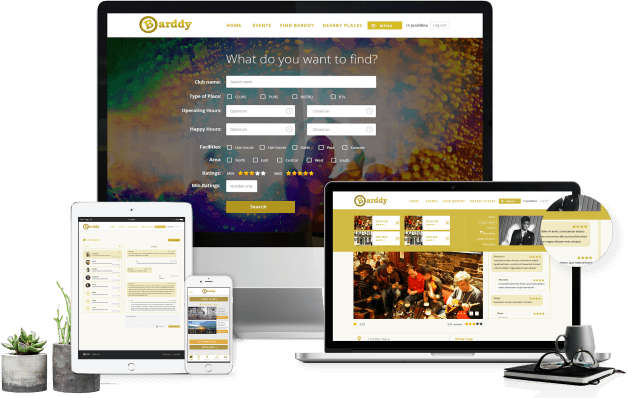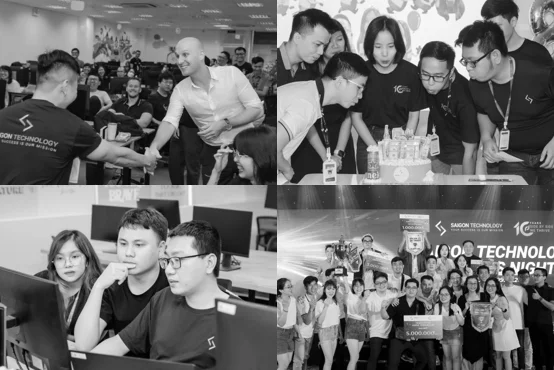MVP Software Development Guide by Saigon Technology

Ideas on the features and function of software products can be grand when still an “idea” but challenging to execute in real life. A Minimum Viable Product is one way to get those grand ideas working.
Essentially, MVP software is a test version of your product idea. While some may confuse that for creating leaner products, the idea of MVP in software development is to create the most basic version of a software product as use that as a test version. The product can then be tested, and the insights from user feedback used to further shape and materialize the custom software product to a more concrete, fully-fledged product.
In the last 8 years of working with clients from all over the world on both software product development, Saigon Technology has consulted them many times to start with the MVP development before adding full functionality to the product. Let’s explore more!
Why You Need MVP Software Development
Building a minimum viable product comes with its advantages. These include:
- Faster release: One of the main benefits of MVP development is it shortens the development period. You can release a basic yet fully functional product within a short time, thus capitalizing on the opportunities that emerge in the fast-paced market.
- Functional products: From the onset, the focus is on developing and improving the core components of your product. This eliminates the possibility of underbuilding, feature creeping and rework time.
- Room for evolution: Given the development is gradual, MVP software development creates maximum room for your product to evolve depending on the needs that arise. This is critical, especially in making your product future-proof.
- Build relationships with customers sooner: This model of development gives your users a chance to contribute to the overall structure of your product from the onset. Their insights and interests shape the form and structure of the overall product.
- It is cost-effective: Instead of investing steeply in developing a complete product whose viability is not tested, MVP allows you to invest gradually in a product that minimizes the risk of losses. Further, investments are made on a need’s basis, thus more cost-effective.
The Basics You Need to Get Started
Before commencing the development of a minimum viable product, an understanding of the various types of MVP would help make your concept more concrete. Here are the four types of MVP for software products.
1. Single-feature MVP
As the name suggests, this model works by implementing one feature of your product and has the same test by users. While unpopular to many, this model can propel your product to achieve the success you desire. Globally, some big brands have adopted this model and have attained great success. A good example is Pokemon Go – started with one feature and expanded after the test feature proved effective.
With the Single-feature MVP path, development should focus on deploying the most useful feature of the product. Think about your target users and what they would value the most in your product. The feature that would address their immediate needs should be the one you focus on.
2. Piecemeal MVP
This model entails reusing various ready-made product elements created for previous projects. The goal is to minimize the development time and costs while building your software. As hinted, the development largely entails the use of open-source codes or codes already written for previous projects, while using standard interface templates. Once you create a basic functional form of a product, you can then look to upgrade.
The main limitation of this model is it may not work if your market is hungry for something unique. Basically, this type of MVP translates to sacrificing the uniqueness of your code and overall product. Nonetheless, it is a good model to go by, especially if the different elements utilized have been tried, tested, and proven effective.
3. The landing page MVP
This model takes the form of a presentation in the form of a video or plain text targeting potential users. These presentations describe the idea and conceptual framework for your product to the users as a way of getting feedback from them without investing a lot of resources in the product.
The MVP model is ideal because, while you are investing minimum resources at the initial stages, you get a chance to understand the expectations and interests of your target users on your product, which helps you to future-proof your software product.
However, if you take on this path, you should be cognizant of the possibility of your ideas being hijacked by your competitor. Therefore, this model should always be complemented by any of the other models.
4. The Flintstone MVP
Flintstone MVP entails handling the processes you want to automate with your products manually behind-the-scenes. The idea is to test the relevance of your concept in the market. For instance, if you want to automate your customer support, you can begin by making the process manual – person-to-person calls and replying to emails in-person. Through the testing period, you can analyze whether the automation is relevant and necessary in streamlining your operations.
However, this approach requires substantial investment in time and resources, especially if the tasks being tested are labor-intensive and consume substantial amounts of time.
Prioritizing Features for Your MVP Software
Fragmenting your vision to end up with a minimum and viable product can be quite tasking, especially when you feel like your whole concept is more concrete when all elements are together. As such, the first and most critical step entails conducting thorough research on your product and its fit in the market dynamics within which you operate. Get to know what your users want and how much they would be willing to pay for the product. Further, understand their interest and what the gaps they feel exist in similar products. Rigorous planning should then follow for effective execution of the product.
With all the information at hand, you can then segment your product features into these groups:
Must-have
It can be one stand-alone feature or a set of features that your product needs to have. The rule is the features here are extremely critical in making your product basic and practical. As such, they should be backed by sufficient data proving its relevance.
Should have
With a basic product at hand, the “should have” features can help expand your product functionality in future upgrades. In this category can be further fragmented, depending on their priority level. These can be gradually introduced into the structure of your evolving product.
Could have
These are the features that your product could function effectively without, but adding them would not distort the overall concept of your product. The features here should be implemented only when they are proven to improve the overall experience of using the product, and when there are sufficient resources for implementation.
Won’t have
These are the features you don’t plan on including in your product, especially if your research has shown they are irrelevant or if they don’t contribute to your overall vision.
After Release
The idea of MVP is to get it right and adjust accordingly as you build up your software product. Be critical when analyzing feedback from your audience. Listen to your audience, read their reviews of your product and communicate with them. Essentially, your task post-release should be collecting user insights to get an understanding of the strengths of your product and the weakness areas that need adjustments.
You also have to be aware of the possibility of failure. While you might have a good concept, the market dynamics may not favor it. As such, it is also important to be open to the possibility of your software product being rejected. When that happens, have mechanisms in place to pivot successfully and pick the lessons that will inform your future endeavors.
Wrap-up
There is a lot of upfront work that goes into MVP development. With the need to conduct rigorous research on the market dynamics and the interests of your target users, the whole process of defining a minimum viable product can be quite a challenge. However, once you get the defining frameworks that form the basics of your product and are guided by thorough research and user feedback, you can always navigate the upgrades process easily.








